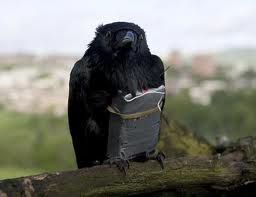"Take it easybut take it." Woody Gutherie
The Wild Bunch
I was sitting in the audience of the last session of the SMX West Ask The Paid Search Buyerssession (featuring Kerstin Baker-Ash, Cady Condyles, Joseph Kerschbaum, Michael Mothner & Dan Soha). The whole session was Q & A and one of the questions asked was what the panelists thought of DKI (Dynamic Keyword Insertion). Each and every member of the panel expressed total distain for DKI with Joseph (I believe) belittling it as the lazy way to do PPC. Their consensus opinion was that PPC Ad Groups need to be tightly focused with few keywords in each group and a tight nexus between the ad text and the keywords.
Now, I cant disagree with the how these folks would craft a PPC Ad Group in an ideal world. And after all, they were on the SMX Panel and I was in the audience, which might show that their PPC knowledge and experience might just be a wee bit more advanced than mine :.)
But, we dont live in an ideal world. And, for people who are self-managing AdWords accounts and who dont have the experience and knowledge of our esteemed SMX West Panelists, DKI is an awesome technique to help create much better ads.
The Three AdWords Ads Components
There are three components to every AdWords Ad that you see: The Keyword; The Ad Text & The Landing Page.
A proper harmony between all three is necessary to achieve an optimum quality score that will make your ad more likely to be seen by targeted visitors (assuming you are bidding appropriately).
The AdWords Newbie who dumps all his/her keywords in one ad group, writes generic ads, and sends all visitors to the website home page lacks any nexus between the three components, and therefore, the campaign effort flops.
Ad Headline DKI
However, what if that person learned how to do DKI and did it just for the Ad Headline? With just that one piece of knowledge, the account manager has immediately synched 2/3rds of the AdWords components. When the DKI ad is displayed in Google, the searched keyword (or the DKI substitute) will display and be bolded, making it more likely for the visitor to see and click. Quality Score should rise just from this one step. DKI doesnt automatically make the landing page more relevant to the query...but if the person could also learn to segregate their keyword list in such a way to map relevant keywords to the most appropriate landing page on the website, then all three facets of their campaign could be in alignment and while their account would not run as optimally as one managed by one of the SMX West panelists, I think that the amateur effort could achieve a decent level of success.
As an AdWords Amateur, I discovered the ShoeMoney Arrow Ad trick which Ive found to be extremely effective even if it flies in the face of our panelist expert advice. ShoeMoney puts forth the viewpoint that a Triple DKI Ad in the shape of a rightward arrow can lead to much increased CTR (which has also been my experience) because the shape of strategic bolding of the ad makes it stick out. Many argue against too much DKI because it could lead to viewers seeing nonsense ads...but if you are smart in how your setup your ad and in choosing your keyword list appropriately, you can make this problem almost negligible. Furthermore, in some verticals, Ive had nonsense ads with heavy bolding outperform proper ads.
So, in closing, I would absolutely argue against demonizing DKI...its a tool that many campaigns have greatly profited from and only at the most advanced levels of paid search expertise does it become redundant.
Four Lions


